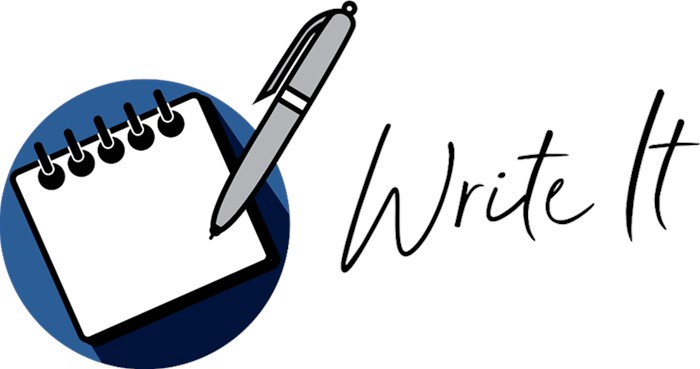Improve your academic writing skills with SADiLaR’s free tools
Mastering the art of academic writing can be challenging, though, especially for students who are not studying in their mother tongue. Fortunately, the South African Centre for Digital Language Resources (SADiLaR), a national research infrastructure that aims to ensure a digital future for our official languages, has enabled the development of resources to assist students with the basics of academic writing – all of which are freely available.
Write-it in South Africa’s 12 official languages

Write-it is a series of educational videos with handouts for simple reference and optional online tasks, available in South Africa’s 12 official languages (including Sign Language). Developed by the Inter-institutional Centre for Language Development and Assessment (ICELDA), SADiLaR’s language development and testing node, the programme comprises 15 topics, including: task analysis (how to understand what a set task is requiring from you); introduction and conclusions (how to write them); discourse markers / logical connectors (how to logically guide your reader through the text); voice, stance and engagement (how to display authority over your text and involve your reader); referencing support (how to reference correctly); and plagiarism avoidance (how to integrate and reference sources in such a way that you don’t plagiarise).
According to ICELDA-SADiLaR Node Manager Prof Tobie van Dyk, students indicated the need to write and study in English with the support of their home languages.
“Write-it aims to fill that gap by guiding the students through writing. The handouts and videos should be used as a package, moreover, in a situation where a student knows the English term used, but not the term in their mother tongue, or vice versa,” says Van Dyk.
Although the course is divided into 15 modules, students are free to pick how they want to interact with it. Therefore, students can use the materials from start to finish or just concentrate on the parts that are difficult for them.
Watch the videos here: Afrikaans, isiXhosa, Sesotho sa Leboa, Xitsonga, English, isiZulu, Siswati, Sign Language, isiNdebele, Sesotho, Tshivenda, Setswana
Spelling Checkers

Spelling Checkers for South African Languages is a spell-checking software tool for ten of South Africa’s official languages, excluding English (for which there are plenty of spell-checkers available). Developed by the Centre for Text Technology (CTexT®), the tool, which works with the Microsoft Office Suite, allows the user to choose their South African language in the relevant Microsoft software. It then recognises spelling and typing errors and offers suggested alternatives for words that are not recognised. The text layout can be improved with the correct word hyphenation for the selected language.
The spelling checker tool offers an extensive word list for Afrikaans, isiNdebele, isiXhosa, isiZulu, Siswati, Sesotho, Sesotho sa Leboa, Setswana, Tshivenda and Xitsonga. Since many of South Africa’s languages are under-resourced in terms of available data required for tools such as this, and language is constantly changing and evolving, the tool also provides for a custom dictionary to which users can add words they regularly use and that are not in the tool’s existing word lists.
If the user so chooses, these custom dictionaries can then be shared with the developer to be verified and included in future updates.
Download Spelling Checkers for South African Languages here.
LwimiLinks – a home for multilingual terminology

LwimiLinks is a new online platform that aims to empower language practitioners across South Africa by centralising multilingual terminology and related information in all academic fields.
According to Friedel Wolff, SADiLaR’s technical manager, LwimiLinks hosts information on South Africa’s available terminology lists and initiatives in multiple languages and gives credit for all the work already done in terms of terminology development.
“LwimiLinks offers a solution for the unnecessary duplication of effort. We encourage institutions to upload their resources and register information on related projects. These resources can then be disseminated through the site to students, language practitioners, academics, linguists, lexicographers, and other users.
Asked about the origin of the name, Wolff explains that ‘Lwimi’ refers to ‘language’ in the Nguni languages. “The ‘linking’ relates to the categorisation and multiple connections we try to make between languages, institutions and subjects, but also between the resources and the people who need them and the people working on them.”
The platform exposes the work at participating institutions by showing projects and documents relating to multilingual support.
“For example, you could search for a term in your textbook if looking for definitions or equivalents in other languages from a glossary, or you can browse for information in your language to see what support is available,” Wolff says. “The documents and projects on LwimiLinks create the links between languages, institutions and subjects to enhance the visibility of resources – even outside of a student's home institution.”
Get started with LwimiLinks here.
*If you have any questions about any of these tools or require further support, please contact the SADiLaR team at gro.ralidas@ofni
- New Research Software awards category launched 24 Nov 2025
- React: Reducing the educational achievement gap through community-led technology 18 Nov 2025
- Prof Bismark Tyobeka hails SA’s 'bold', 'progressive' new energy blueprint 21 Oct 2025
- Prof André Duvenhage - South Africa’s transport infrastructure is failing its people 15 Oct 2025
- Empowering voices: SADiLaR women champion leadership at the Women Leaders in Higher Education Summit 13 Oct 2025
 | North-West University (NWU)The North-West University (NWU) is one of South Africa's top five universities; that offers superior academic excellence, cutting-edge research and innovation and teaching and learning. It all starts here. |